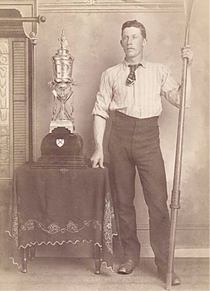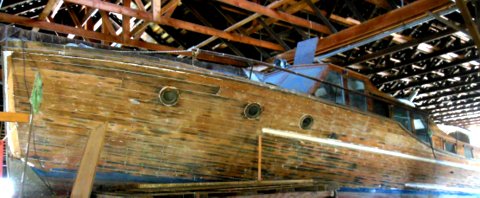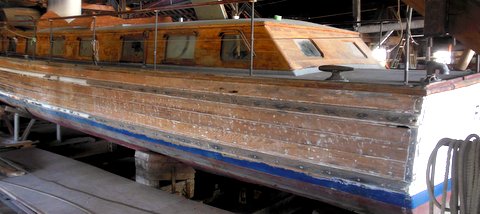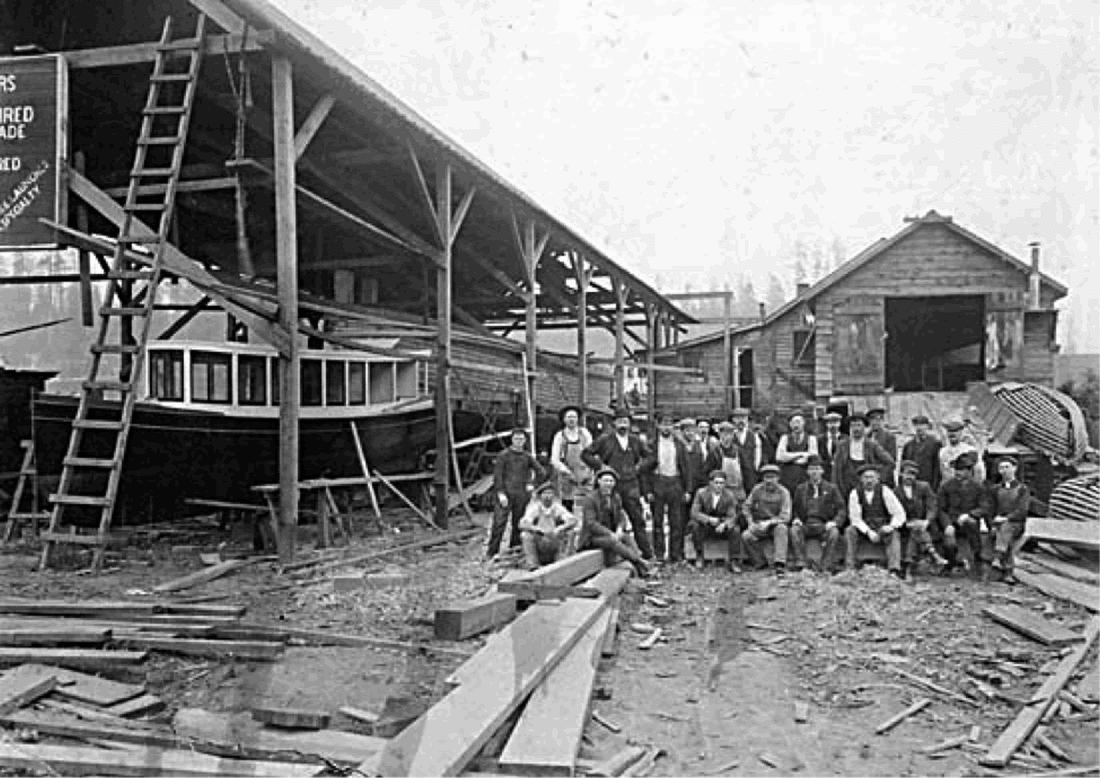Before Fibreglass- From Ontario to British Columbia & The Watts Boatyard (Part 10)
- Richard Crowder

- Nov 3, 2020
- 4 min read
Updated: May 16, 2022
By: Richard Crowder
With solid boatbuilding backgrounds, William and Matthew Watts and their families came to Canada from Ireland in the mid-1800’s and settled on Toronto Island. Once settled, they built dozens of lapstrake sailboats of their own design. Soon they followed the new railway line to Collingwood on nearby Georgian Bay, opened a shop, and began building boats for the booming Great Lakes fresh water commercial fishing industry. Brother Matthew soon left to open a boatbuilding shop in Goderich, Ontario.
W. Watts and Sons prospered in Collingwood, refining their designs until their boats became known for their craftsmanship, speed, and seaworthiness. They became a prolific builder, and built hundreds of what became known alternately as the Georgian Bay Mackinaw, or the 'Collingwood Skiff,' a lapstrake double-ender varying from 28 to 35-feet with a 7-8 foot beam, shallow draft, and two masts with modified gaff rigging. The Mackinaw was so iconic it was enshrined as a Canadian limited edition postage stamp.
The last known surviving restored Collingwood Skiff which was built by W. Watts & Sons in 1923 for Sir Edmund Walker, the first President of the Art Gallery of Ontario, and was recently donated to the Canadian Museum of Science and Technology in Ottawa.
At age 26 son William Jr., along with Collingwood friend and cabinetmaker Edward Trott, headed to Vancouver and started building boats on the beach at the foot of Cambie Street. Already an expert oarsman, and in order to build a name for himself, William Jr. designed and built his own 20-foot rowing skull. Within two years he was the provincial champion representing what is now the Vancouver Rowing Club.
During this same period, young Watts and Trott, with their knowledge of having helped establish the reputation of the Collingwood Skiff, produced what became known in British Columbia as the Columbia River Skiff or Fraser River Skiff. They built literally hundreds of these skiffs bearing a slight modification from the eastern design to better suit the needs of west coast fishing. They also designed and built an incredibly successful racing yacht, the Syren, which won many races including the very first International Yacht Race on the Pacific coast in 1891.
At the turn of the century, they opened the Vancouver Shipyards on Georgia Street in Coal Harbour, on Vancouver Island. Here they specialized in the building and refitting of larger vessels up to and over one hundred feet. In 1904, William Watts Jr. designed and built not his largest but perhaps his signature vessel, the 82-foot schooner Maple Leaf. Built as a private yacht for a prominent local businessman, it flew sail number one for the Royal Vancouver Yacht club and was known as the most expensive pleasure craft on the Pacific coast. It was also the first to be equipped with electric lighting.
During World War I, the Maple Leaf was stripped of its lead keel and brass fittings to aid the war effort and was converted to a halibut fishing boat. For the next sixty years, it plied the coastal and even the dangerous waters of the Bering Strait where, up to the 1970’s, it outfished many newer vessels.
In the eighties it was re-discovered, purchased privately, and converted back to a pleasure yacht by Commodore’s Boats of Richmond. The Maple Leaf is now the centrepiece of the award-winning tourism excursion company, Maple Leaf Adventures.
In 1913, Watts designed and built the 86-foot, 80-ton halibut schooner, Chief Skugaid and sister ship Chief Zibassa along with scores of other large fishing trawlers, many of which have survived and been converted for pleasure use. In 1920, Vancouver Shipyards designed and built its largest boat, the SS Teco, a 135-foot pleasure yacht for local business magnate AJT Taylor.
Vancouver Shipyards designed and built more pleasure yachts through the 1920’s and survived the 1930’s depression years building some of the fastest boats on the west coast. One such was the Skeezix in 1930, a 60-foot rumrunner with a narrow 12-foot beam, powered by a pair of 450 horsepower Liberty airplane engines plus a single diesel engine. It was said to outrun the US Coast Guard with speeds up to 45-miles per hour. The Skeezix still exists today as a pleasure yacht.
During World War II, Vancouver Shipyards built many motor launches, harbour craft, diving tenders, and minesweepers including the famous Fairmile’s for the Royal Canadian Navy. After the war, William Watts Jr. retired and eventually sold Vancouver Shipyards to Vancouver Tug in 1954, the same year that he died.
It since passed through a couple of owners and was moved to the foot of Pemberton Avenue in North Vancouver. Eventually it was taken over and became part of Seaspan’s Vancouver Shipyards. In June, 2020, it negotiated a $2.4 Billion federal contract to build two 173.7 metre support ships for the Canadian Navy, the largest ships to ever be built in Canada. William Watts Jr. would no doubt approve.
For further information and pictures of Watts’ boats and Vancouver Shipyards, check out these websites:
3) Peter Watts and Tracy Marsh, W. Watts & Sons Boat Builders: Canadian Designs for Work and Pleasure, 1842-1946
You can enjoy more from our 'Before Fibreglass' series here:














































Comments